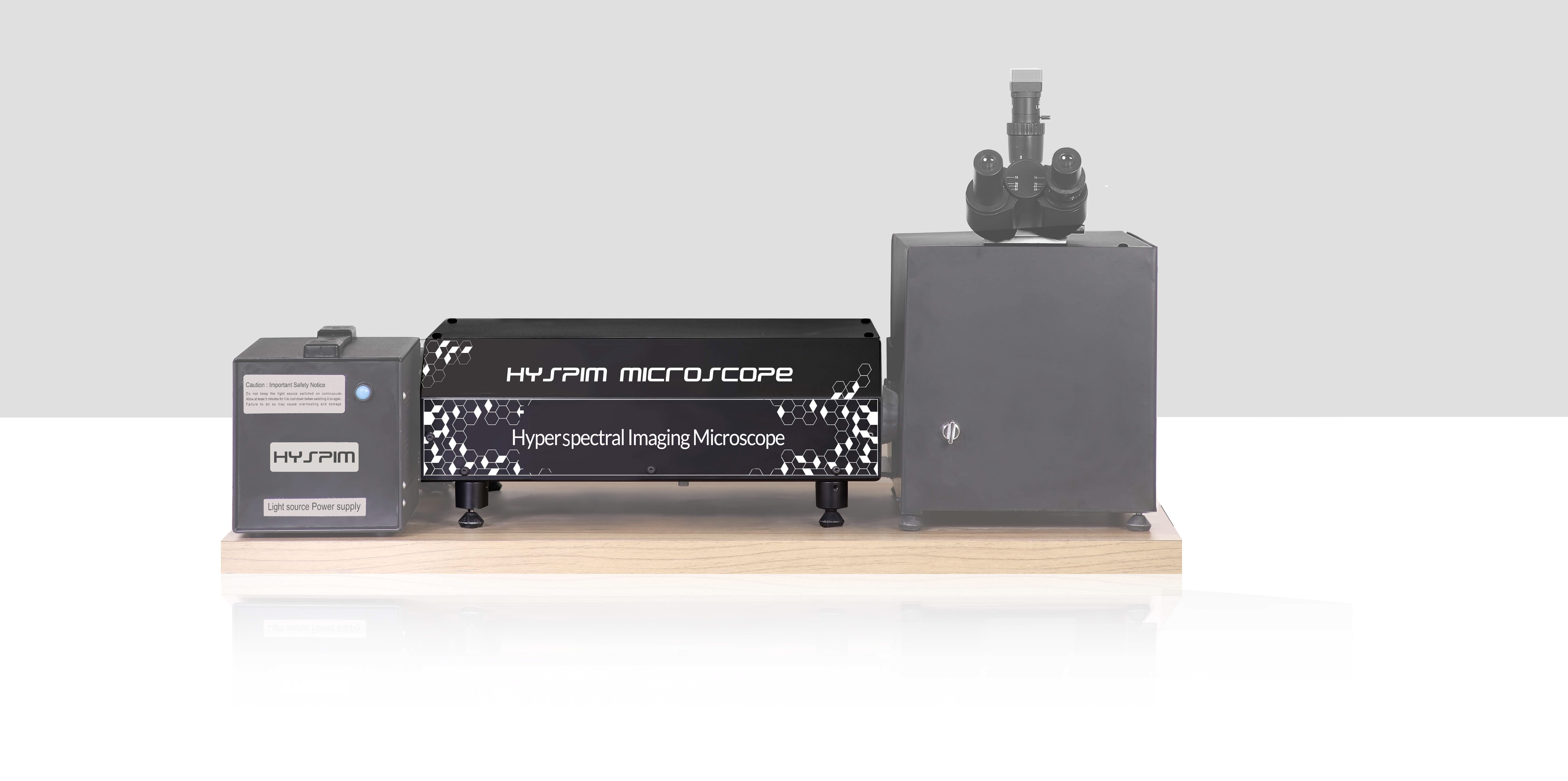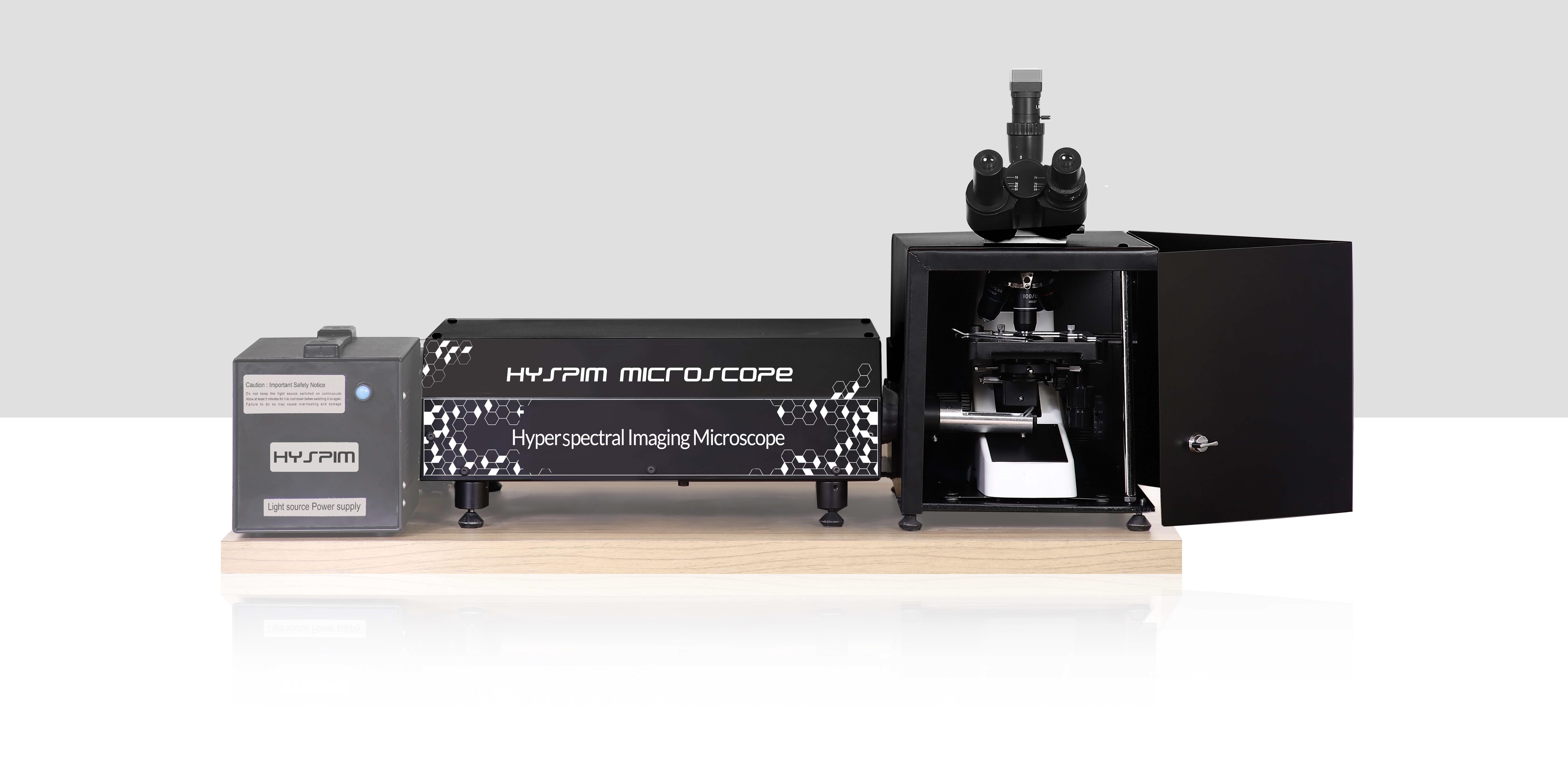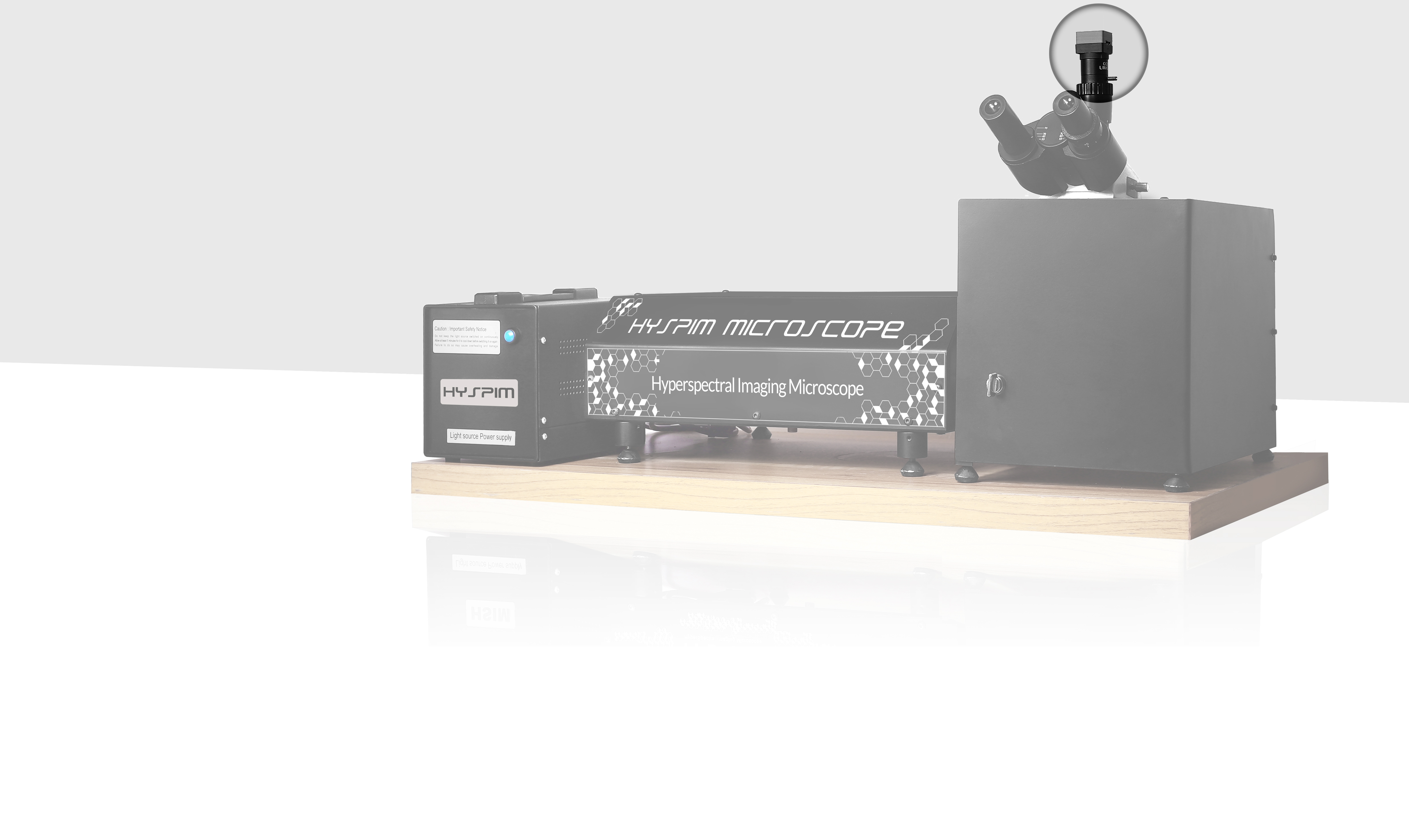The Hyperspectral imaging microscope (HYSPIM) technique integrates the benefits of Hyperspectral imaging (HSI) and microscopic imaging. HYSPIM offers both spatial and spectral information on substances, as well as their chemical composition at the molecular or cellular level. This makes HYSPIM a promising tool for nondestructive sample evaluation in various fields such as medicine, pathology, pharmaceuticals, life sciences, and the food industry.


The HYSPIM microscope comprises three key elements: a variable light source, a microscope, and software. The variable light source covers a spectral range from 400 nm to 1000 nm, with a spectral bandwidth of 6 nm. This source directs light to the microscope, positioned before the condenser lens. Here, the light undergoes reflection by a 45-degree mirror before illuminating the sample. Subsequently, a high-resolution camera integrated into the microscope captures the sample image.
For users who prefer to utilize their existing microscope, the HYSPIM system provides the option to separately purchase the light source, software, and camera. For inquiries regarding this option, please reach out to our dedicated support department


The Hyperspectral imaging microscope offers the following capabilities:
1. A light source with an adjustable wavelength ranging from 400nm to 1000nm, providing a resolution of 6nm across 100 spectral channels.
2. The microscope is equipped with standard objectives at 10x, 40x, 60x, and 100x magnifications, housed within a darkroom enclosure.
3. It employs a high-resolution Basler camera for imaging.
4. The camera and light source are synchronized using Python software to capture Hyperspectral data cubes.


